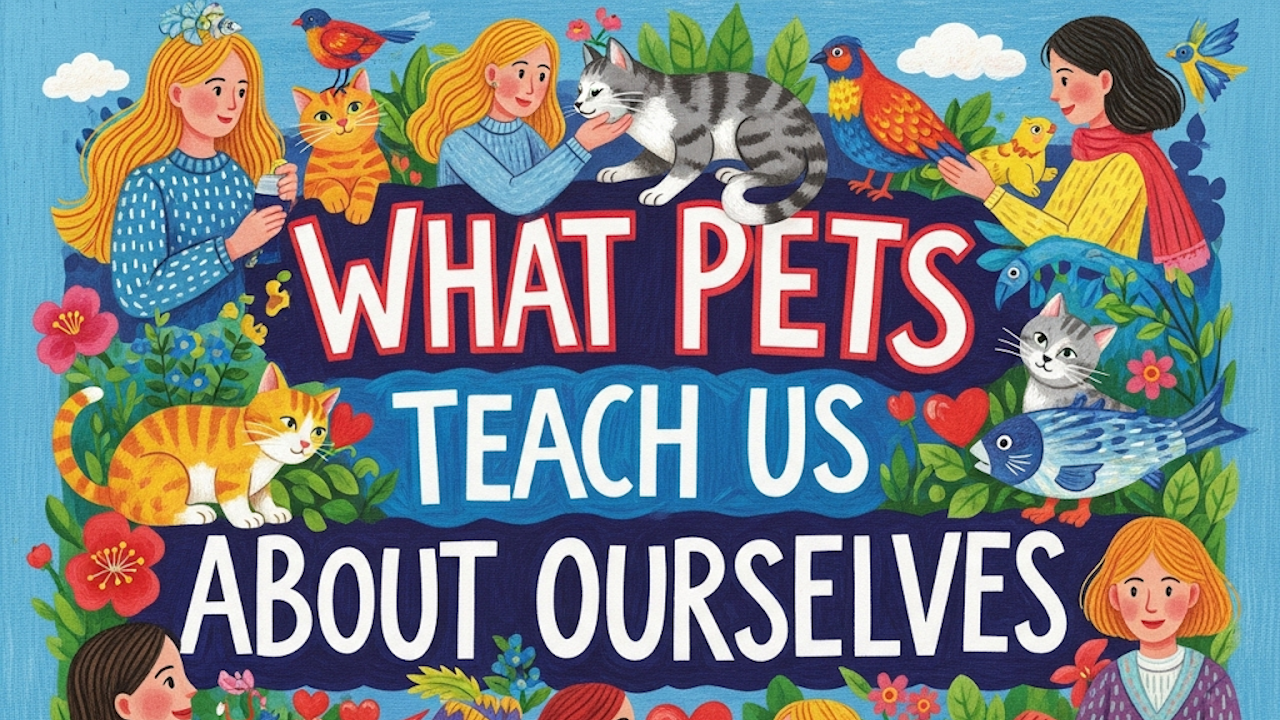Pets occupy a unique space in human lives. They are companions, confidants, sources of joy, and sometimes even our best friends. But beyond the cuddles and companionship, pets have an uncanny ability to mirror our humanity and reflect truths we might otherwise overlook. Their presence reveals not only how we treat others but also who we truly are. In the day-to-day interactions with animals—whether it’s walking a dog, feeding a cat, or observing a fish swim silently in its tank—there is a quiet education unfolding. Pets teach us about ourselves in ways that are profound, humbling, and often transformative.
One of the first things pets teach us is patience. Animals operate on their own timelines. Training a puppy not to chew the furniture or guiding a parrot to mimic certain words requires calm persistence. Unlike humans, pets don’t operate out of malice or stubbornness; they’re simply learning through experience. Our frustration in these moments often says more about our own need for control than their behavior. If we’re open to the lesson, we discover that true patience isn’t just waiting—it’s waiting without agitation.
Pets also cultivate empathy. Unlike people, animals cannot articulate their needs with words. A limp, a change in eating habits, or a low, mournful whine might be their only means of communication when something is wrong. These subtle signs force us to become more observant and attuned to non-verbal cues, sharpening our sensitivity not only to our pets but to the people around us. We begin to notice more—the tired look in a colleague’s eyes, the hesitation in a friend’s voice—because we’ve been practicing with a being that relies solely on our attentiveness to feel safe and understood.
Another profound lesson comes from the loyalty pets show. Dogs in particular are celebrated for their unwavering devotion, but all pets express some form of attachment. They wait at the door, they follow us from room to room, they notice when we’re sad. This loyalty isn’t based on status or wealth. It’s given freely, based solely on presence and consistency. In return, we’re asked to be dependable, responsible, and committed—qualities that often reflect the best parts of our character. If we rise to that expectation, we become more reliable and grounded not just for our pets, but for the people in our lives.
Pets are also powerful teachers of joy and presence. Watch a dog run through a field or a cat sunbathing in a window, and there is no mistaking their full immersion in the moment. They aren’t concerned with tomorrow’s worries or yesterday’s mistakes. They live now. This mindfulness, so elusive to many humans, is their natural state. We, in contrast, are often lost in thought—replaying conversations, stressing over deadlines, or scrolling endlessly on screens. Pets remind us of the richness in small, quiet experiences: a shared glance, a leisurely walk, a nap in a patch of sunlight. Their example encourages us to slow down and savor life more deeply.
On a deeper emotional level, pets often help us face vulnerability. Loving a pet means embracing the inevitability of loss. Their lives are shorter than ours, and their passing is often our first real brush with grief for another being we’ve loved unconditionally. This heartbreak, while painful, teaches us the depth of our own capacity for love. It shows us that to love fully means to accept impermanence. The quiet strength we summon to care for an aging or ill pet—cleaning up after them, comforting them, saying goodbye—reveals reservoirs of compassion and courage that we might not have known we possessed.
Furthermore, pets are nonjudgmental witnesses to our lives. They see us at our best and our worst—celebrating triumphs, enduring heartache, and everything in between. They don’t care what we look like in the morning or how much money we make. Their acceptance is complete. This unwavering regard can be a healing balm for those who feel unseen or misunderstood by the world. In being accepted so wholly by an animal, we often come to accept ourselves more fully. Their unconditional love teaches us how to extend grace inward, softening the inner critic and nurturing a gentler relationship with ourselves.
Even our routines change when we care for pets. They tether us to the rhythms of daily life: feeding schedules, walks, playtime. These rituals, though sometimes tedious, ground us. They give structure to days that might otherwise blur together. For those who live alone or struggle with mental health, these small obligations can be lifelines, reminding us that we are needed and that our presence matters. In providing care, we are reminded of our own agency and importance.
Finally, pets often bring out our innate sense of play. In adulthood, many people lose their connection to spontaneity and silliness, stifled by responsibilities and expectations. Yet throw a ball for a dog or dangle a toy for a cat, and something stirs—laughter, excitement, delight. In these moments, we reconnect with a lighter part of ourselves that often gets buried beneath the weight of daily life. Pets invite us to be silly again, to explore, to be curious, to find joy in the simple.
In countless ways, animals hold up a mirror to our humanity. They reflect our strengths and weaknesses, our tenderness and impatience, our need for connection and our longing for meaning. They don’t just teach us how to care for another species—they show us how to better care for ourselves and each other. Through them, we become more patient, more present, more empathetic, and more alive. Pets don’t just live alongside us; they change us, quietly and profoundly.

